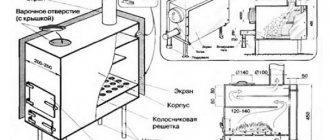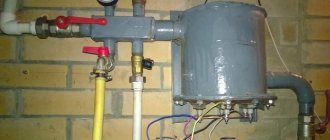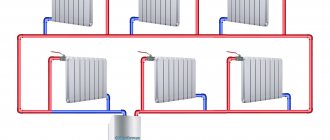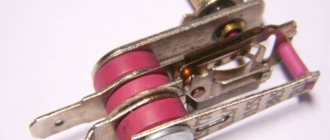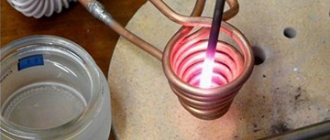The sun is a powerful and endless source of thermal energy for our planet. We get it absolutely free, hence the idea of using it for human needs. Another thing is that devices that convert solar radiation into heat are now quite expensive. Even a small factory-made solar collector costs a lot of money. But anyone can make a homemade solar water heater with their own hands, and how to do this will be discussed in this article.
The principle of operation of the water heater
To get down to business with an understanding of the issue, you should first understand what the operating principle of a solar water heater is. As an example, it is best to take a factory-made device, which is able to heat water even in winter, although in much smaller volumes than in summer.
The device is a battery assembled from many individual elements in the form of glass tubes. Inside each tube, made of quartz glass, there is another one, painted black and filled with a substance that evaporates at low temperatures.
In order to prevent heat loss from the inside, as well as to avoid exposure to the environment outside, air was removed from the space between the tubes. The ends of all elements enter a horizontal collector where heated water flows. Such vacuum tubes for water heaters very effectively absorb solar heat and transfer it to water due to evaporation / condensation of the substance (working fluid).
The system operates as follows:
- under the influence of sunlight, the working fluid turns into steam and rises to the upper part of the glass flask;
- in contact through the walls with the flow of water, the substance gives off thermal energy to it and returns to the liquid state of aggregation;
- obeying the force of gravity, the working fluid flows to the lower part, where the cycle begins anew;
- Typically rooftop solar water heaters are connected to an additional indirect boiler coil. In this way, heat is transferred to the home heating network.
Note. Vacuum tubes are made of quartz glass, which, unlike ordinary glass, transmits ultraviolet waves. This allows you to absorb solar energy during cloudy periods and during the cold season.
As you might guess, it is impossible to build such a structure at home. Let's give a more successful example: a non-pressure water heater, where heat is transferred directly, without an intermediary. A copper coil connected to a storage tank is placed in a rectangular case with a well-insulated rear wall. Water naturally circulates in the circuit, heating directly from the sun, as a result of which the temperature in the storage tank gradually increases.
The coil tube is pressed into a metal plate - a dark-colored heat sink; it is protected from the effects of precipitation by durable glass. This solar storage water heater is not as expensive as a vacuum heater, but it is also less efficient. It works well only in sunny, cloudless weather. But its design is simpler and can be implemented at home.
For reference. There is another way to take advantage of the sun's energy - install a conventional water heater with solar panels that generate electricity. But such a system is very expensive, although it can operate year-round.
Invisible solar collector
Energy-efficient houses, “green” technologies, alternative energy - these expressions are increasingly entering our lives. Today, no one is surprised to see solar panels on the roof of a country house or a wind generator on the site. So far, due to high prices and climate conditions, such technologies have not become widespread in our country. Nevertheless, we think that users of our portal will be interested in the invention of Spanish engineers who developed an “invisible” solar collector.
Many people, even living in a hot climate and having the funds to buy solar panels or a solar collector, do not purchase “green” devices. In their opinion, they spoil the appearance of the house. Especially if you place such devices on the roof. The Spaniards proposed a way out by combining a solar collector and a slate roof that is considered elite into a 2in1 device and called it “thermal slate.”
The essence of the idea is to “remove” the heat from the slate (a dark-colored roof heats up over 90°C on a fine day) and use it to heat water in the house.
The solar collector itself consists of flat metal blocks 3.5 cm thick through which water circulates. The outside of the block is lined with natural slate.
After installing the system, the roof is no different from the roofs of ordinary houses.
At the ends of the solar collector there are 2 outlets for water. By connecting the panels to each other, the “thermoslate” is combined into a single solar collector, and then connected to the cottage’s water supply system. The panels are mounted on hidden fasteners, which minimizes the possibility of leaks and does not spoil the appearance of the roof.
In total, four standard sizes of panels are produced: 32x22, 35x22, 40x22 and 50x25 cm. The system can also be combined with a regular slate roof (or artificial slate covering), and it is impossible to visually determine where the solar collector is located and where a regular roof is installed.
Installing the system is also not particularly difficult - the main thing is to strictly follow the instructions and calculate the required number of panels in advance.
Depending on the roof area, the number of panels changes and, accordingly, the power of the entire system. After installation, the solar collector is connected to the domestic hot water system of the country house.
Tests have shown that on a hot day, a thermal shale roof with an area of approximately 8 square meters. m provides 80% of the hot water needs of a family of four to five people. The weight of the panels (without water) is 20 kg per 1 sq. meter.
Due to the large mass of the entire system (only 1 sq. m of an ordinary slate roof can weigh about 20-25 kg), the solar collector works like a heat accumulator, preventing the heated water from cooling down on cloudy days.
If necessary, the panels can be dismantled or installed on another roof.
The Spaniards recognize that the use of panels is economically justified only in countries with hot climates, so they are working on further improvements to the system aimed at reducing the cost of the entire structure and increasing its efficiency.
FORUMHOUSE has a topic where you can find out all the details of building an energy-efficient house. We also recommend taking a video tour of a passive energy house and watching a video that shows how the solar collector and air pump work.
Selection of materials
So, having decided on the concept of the future solar water heater, let’s move on to the selection of materials for the heat exchanger. There is plenty to choose from; the heating circuit can be made from:
- copper tube is ideal;
- black polymer pipes;
- sections of flat steel radiators;
- aluminum tubes.
Note. Craftsmen who had long ago brought the idea to life at home used a black rubber garden hose or a heat exchanger from an old refrigerator as a heated circuit.
The most difficult thing is to determine the heat transfer surface of the coil. If you take steel radiators instead, you won’t have to think long. All the same, it will not be possible to install more than 2 panels in one case, otherwise the structure will be too heavy. In other cases, a solar water heater made by yourself must be calculated experimentally. Solar activity in each region is different, and the location of the house and its orientation in space also plays a role. Therefore, it is difficult to give unambiguous recommendations about the length of a coil made of such and such material; it must be determined individually.
To make the heat sink body, you can take wooden boards and a sheet of plywood, and instead of a glass front panel, use a simple material such as polycarbonate. It is transparent and strong enough that even strong hail cannot break it.
So a water heater made of polycarbonate will be no worse than a glass one. As for the storage tank, you can make it from sheet metal or purchase a ready-made plastic or steel container. The easiest way to install connecting pipes is polymer, for example, metal-plastic.
Manufacturing recommendations
For those who prefer simple solutions, there is an option long ago invented by our grandfathers. One or more tanks painted black are installed on the roof of a house or a separate shower room. This water heater works simply: warm water flows through a vertical pipe from the barrel directly into the shower, you just have to open the tap. To fill the container, a water main is laid to it. With good solar activity in the summer, the water in the barrel heats up in just a few hours.
A simple tank on the roof cannot compare with a solar collector in terms of efficiency, even a homemade one. Therefore, having decided on the dimensions of the heat sink, it is necessary to make a housing where the coil should then be placed. It is preferable to assemble it from wood; it does not transmit heat as much as metal. Before laying the heat exchanger, the rear wall must be insulated with a layer of foam plastic. The general diagram of a solar water heater with a storage and make-up tank is shown in the figure:
Just assembling a heat receiver with your own hands is not the whole job; you need to use it correctly in the water supply system. The solar water heating installation shown in the diagram consists of a tank - battery, make-up tank and the collector itself. You should not install unnecessary pumping equipment; you should allow the water to circulate naturally. It is necessary to ensure that the battery is positioned slightly above the heat sink, and the make-up tank is above the storage tank.
The hot water tank must be insulated; any rolled material is suitable for this. In order for the storage water heater to operate in automatic mode, a float valve must be installed in the second tank that responds to a decrease in the liquid level. A pipe from the water supply is connected to the valve connection. Now, during the flow in the main tank during washing, cold water will be supplied to its lower zone. Do not forget to provide a vertical air outlet pipe raised to the required height.
How to make a full-fledged solar water heater with your own hands (video)
The main elements of this device are:
- make-up tank;
- storage tank;
- collector.
The following video describes the manufacture of a solar water heater in sufficient detail:
According to experts, it is not worth installing a pump in the system. Water circulation should occur naturally. To achieve this effect, the tank must be installed above the heat sink, while the make-up tank must be located above the storage tank. Another practical recommendation from experts is to install thermal insulation on the tank containing the heated water. For this you can use any roll insulation.
To automate the process of replenishing water in the system, the second tank should be equipped with a float valve.
The system must also have a vertical pipe to allow air to escape. To ensure greater efficiency, it is usually raised to a fairly decent height.


